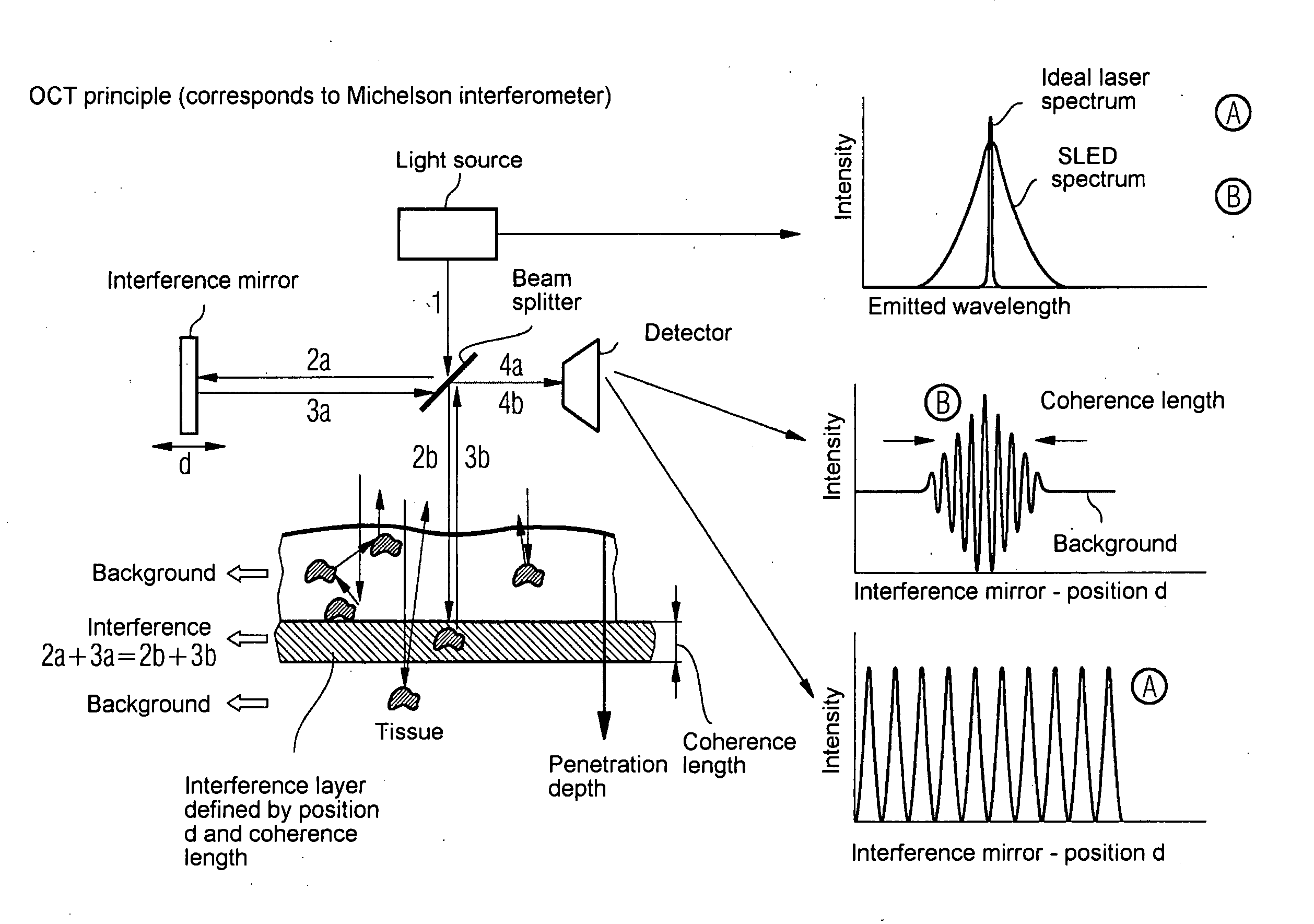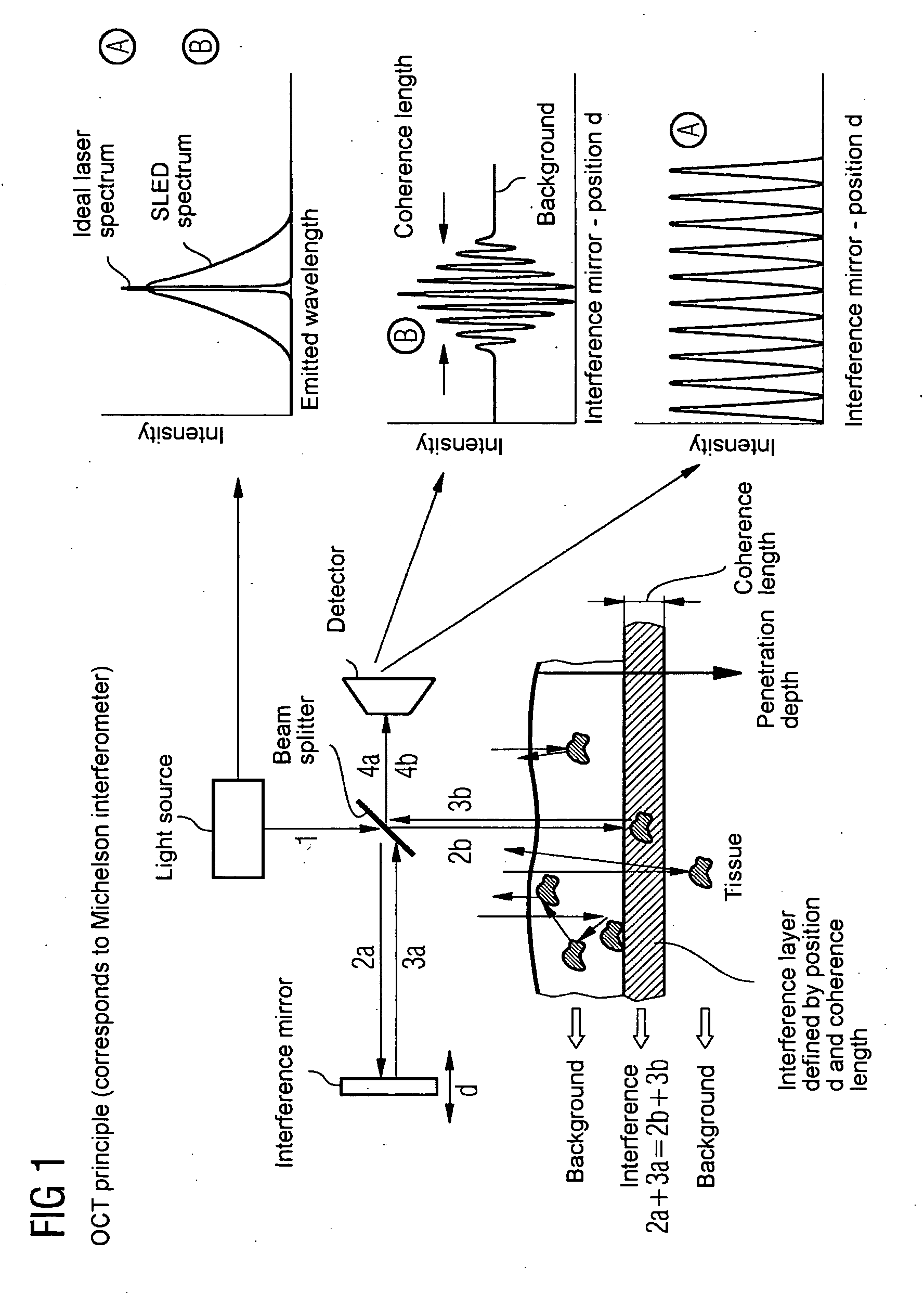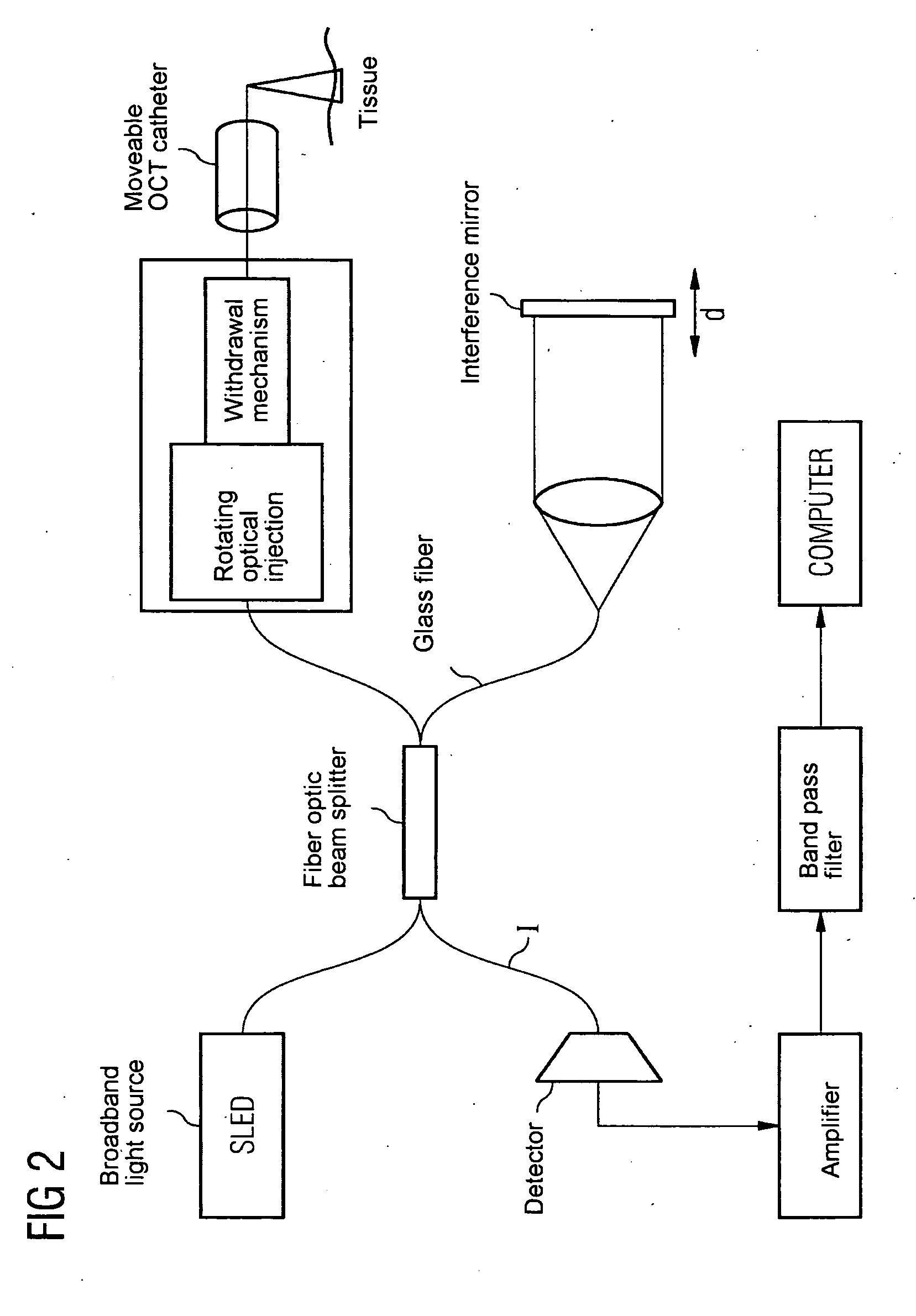Oct-based imaging method
a catheter and imaging method technology, applied in the field of catheter-based imaging, can solve the problems of large distorted images, possible artifacts, and currently difficult for a doctor looking for the most minimal pathological changes, and achieve the effect of further improving the functional molecular process
- Summary
- Abstract
- Description
- Claims
- Application Information
AI Technical Summary
Benefits of technology
Problems solved by technology
Method used
Image
Examples
Embodiment Construction
[0018] The principle of optical coherence tomography is to be explained below with reference to FIG. 1. The principle corresponds to the mode of operation of a Michelson interferometer. A light beam (e.g. laser beam) 1 emitted from a more or less coherent light source is divided by a beam splitter in the form of a semi-transparent mirror into two sub-beams 2a, 2b. The sub-beam 2a is directed onto an interference mirror, such that it strikes the beam splitter again in the form of a reflected beam 3a, penetrates said beam splitter and strikes a detector as beam 4a. In contrast the sub-beam 2b transmits the beam splitter immediately and is directed onto the tissue to be examined which comprises reflection and scatter centers, at which it strikes the beam splitter again in the form of a reflected beam 3b. This time however it is reflected by this and strikes the detector similarly as beam 4b. With the interference condition 2a+3a=2b+3b, the beam 4b coming from the interference layer int...
PUM
 Login to View More
Login to View More Abstract
Description
Claims
Application Information
 Login to View More
Login to View More - R&D
- Intellectual Property
- Life Sciences
- Materials
- Tech Scout
- Unparalleled Data Quality
- Higher Quality Content
- 60% Fewer Hallucinations
Browse by: Latest US Patents, China's latest patents, Technical Efficacy Thesaurus, Application Domain, Technology Topic, Popular Technical Reports.
© 2025 PatSnap. All rights reserved.Legal|Privacy policy|Modern Slavery Act Transparency Statement|Sitemap|About US| Contact US: help@patsnap.com



